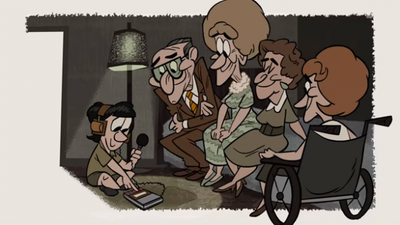DOWNLOAD VIDEO
After facing significant public scrutiny in recent years, the beef industry is attempting to reduce its carbon footprint. Kim Stackhouse-Lawson with the National Cattlemen’s Beef Association said the United States could take the lead in reducing greenhouse gas emissions based on changes the beef industry has made in the last 40 years. The cattle industry has one of the largest carbon footprints on the planet. The United Nations reports that 14 percent of greenhouse gas emissions come from raising livestock. “Beef is at the top, the highest emissions per dollar of output, higher than electric utilities globally,” according to Thomas Hertel, an agricultural economist at Purdue University. Part of the problem is the cow’s stomach, which releases large amounts of methane gas, one of the most harmful greenhouse gases. The U.S. cattle industry has produced fewer but bigger cattle in the last four decades. Though this means less of a carbon footprint, changes to cattle’s genetics and nutrition has led to serious debate amongst ranchers and the general public. “Just let the cow be a cow,” said Del Ficke of Ficke Cattle Company. He favors allowing cattle to graze and eat grass over the corn-hay feed combination and conventional feed lots that many beef farmers use. Allowing cows to forage the land lessens the dependence on corn and soy and the fertilizer and fossil fuels needed to grow them. Feed lots are more time efficient however, allowing cattle to reach their full size six months earlier than grass-fed cattle, thereby reducing their carbon footprint.Vocab
carbon footprint
— the amount of carbon dioxide and other carbon compounds emitted due to the consumption of fossil fuels or raising cattle
methane
— a greenhouse gas released during the decomposition of plant or other organic compounds
Warm up questions
- What is a carbon footprint and how is it determined?
- What sort of everyday activities contribute to carbon emissions?
- How does what we eat impact the environment?
Critical thinking questions
- What are the benefits of grass fed cattle versus feed lots? What are some of the drawbacks?
- What else should cattle producers do to reduce their carbon footprint?
- Why does the U.S. have an advantage when it comes to controlling this carbon footprint?


